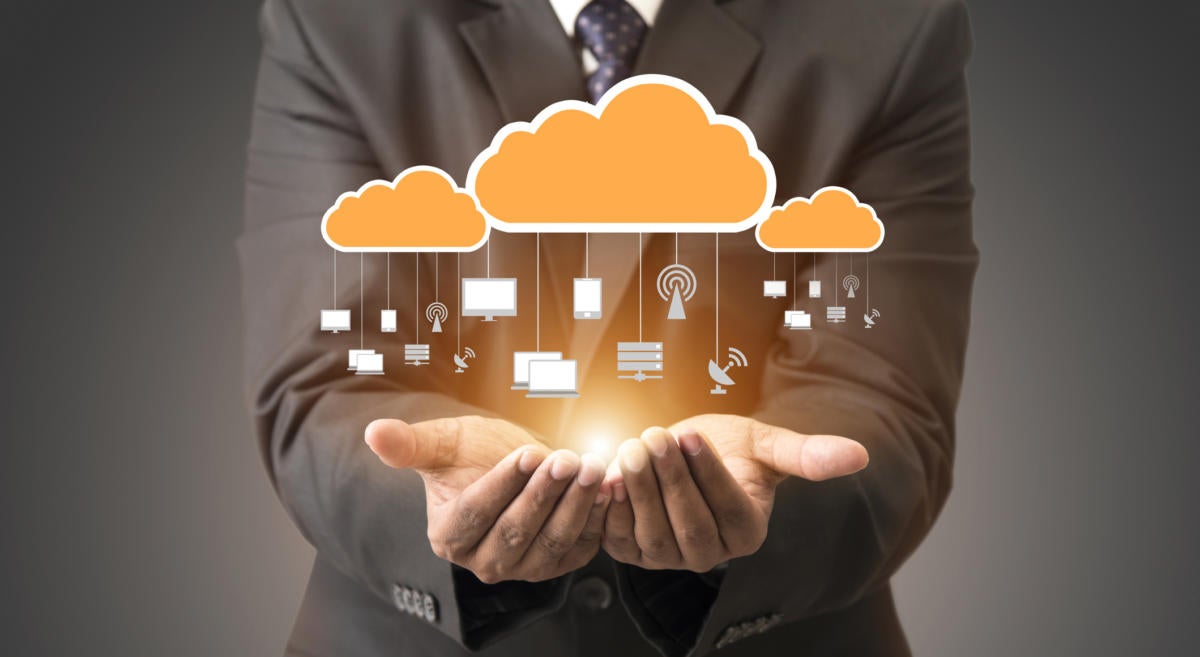Are Cloud Portability and Interoperabilty Even Possible?
Interoperability, or the ability for computers to share information with each other, is the basis of cloud portability. Data and applications might be created with a specific operating system or runtime in mind. That makes it tricky to move that information to a different environment without any problems. Even if the functions of a system are the same, the foundation it’s based upon is crucial for application stability. Because it’s fundamental for cloud portability to work, cloud providers need to support interoperability between each other’s systems. Unfortunately, this rarely happens fro two major reasons: native features and the lack of standards. Just like any other kind of service, cloud providers present native features in their services. These are features that the provider specializes in, or that no other provider offers. They go beyond the basics of cloud computing and are designed to give developers additional resources for their applications.
Technology can replace additional employee costs, minimize geographical differences and help project a professional image. Technology enhancements may require employee training to ensure that new technology devices are used correctly and seamlessly integrated into everyday business processes. Use of Evernote and Dropbox to maintain access to files and share files with anyone from anywhere without a physical presence somewhere. Integrating technology into the workplace offering increased productivity is important for staying competitive. Over the past five years, technology has rapidly changed and developed in every conceivable field. Smart phones are now able to act as standalone computer devices that can take pictures, the internet, send or receive e-mails and text messages and of course they even make phone calls. Instead of having to wait one week for files to be sent by mail, information can be transferred instantly via email or file sharing programs. Technology has made the world much smaller, especially in the business context. People from different cultures interact regularly.
Europe is prepared to rule over 5G cybersecurity
The theme of this year’s show is “intelligent connectivity”; the notion that the incoming 5G networks will not only create links between people and (many, many more) things but understand the connections they’re making at a greater depth and resolution than has been possible before, leveraging the big data generated by many more connections to power automated decision-making in near real time, with low latency another touted 5G benefit (as well as many more connections per cell). Futuristic scenarios being floated include connected cars neatly pulling to the sides of the road ahead of an ambulance rushing a patient to hospital — or indeed medical operations being aided and even directed remotely in real-time via 5G networks supporting high resolution real-time video streaming. But for every touted benefit there are easy to envisage risks to network technology that’s being designed to connect everything all of the time
IT’s Vital Role in Multi-cloud, Hybrid IT Procurement

Dillingham suggests that organizations consider all types of deployments in terms of costs. Large, existing investments in data center infrastructure will continue to serve a vital interest, yet many types of cloud deployments will also thrive. And all workloads will need cost optimization, security, compliance, auditability, and customization. He also recommends businesses seek out consultants to avoid traps and pitfalls, which will help better manage their expectations and goals. Outside expertise is extremely valuable not only with customers in the same industry, but also across industries. “The best insights will come from knowing what it looks like to triage application portfolios, what migrations you want across cloud infrastructures, and the proper set up of comprehensive governance, control processes, and education structures,” explains Dillingham. Gardner added that systems integrators, in addition to some vendors, are going to help organizations make the transition from traditional IT procurement to everything-as-a service.
Are Frameworks Good or Bad, or Both?
A library is defined by Van Buul as a body of code, consisting of classes and functions, which is used by an application, but without being part of that application. An application interacts with the library by doing function or method calls into the library. He defines a framework as a special kind of library where interaction is the other way around, an application now implements interfaces in the framework, or use annotations from it. During execution the framework invokes application code; using a library it’s the other way around. Creating an application without using a framework is for Van Buul somewhat of a mirage, claiming that even if you just use the Java platform, you are also using a framework. He points out that the Java platform is an abstraction over the operating system and the machine and that the platform is invoking the application code. He also notes that most business applications have a web-based interface and use an abstraction layer to create entry points into the application — meaning a framework is used.
The end of Blu-ray

Why? It's all because of streaming. The numbers speak for themselves. According to the Digital Entertainment Group 2018 home entertainment report, we spent more than ever on video last year, $23.3 billion, up 11.5 percent from 2017. Of that, subscription streaming -- led by Netflix, Amazon Prime Video, and Hulu -- took the lion's share, with a 30 percent year-over-year rise to $12.9 billion. We also bought and rented another $4.55 billion worth of online movies and TV shows. Blu-ray? Even with the growing popularity of 4K Blu-ray, movie, and TV show sales only came to $4.03 billion. That's a 14.6-percent drop from 2017. At the same time, the far less expensive streaming-devices sales from companies like Rokuare growing. By NPD's count, streaming players sales from 33.3 million in November 2015 to 67.8 million in November 2018. A recent Deloitte study shows that in the past 10 years the number of households subscribing to paid streaming-video services has grown by nearly 500 percent.
Shopping for AI talent? Beware of unicorns

When executives woke up to the potential of big data, it was also at the same time we were dealing with financial collapse. Balancing between the data economy and keeping regulators at bay created a new unicorn, the chief data officer. Digital has had its own unicorn story. Adopting technology to automate, augment, and scale businesses is hard. Usher in the chief digital officer. Today, AI talent challenges inside enterprises are causing firms to assess their approach to data science while also recognizing deep data deficiencies and the impact on DevOps. The new unicorn? The AI engineer. ... Too many skills and experiences are expected from a single person. In an emerging market, to expect savants are available or findable is asking a lot. Even the digital disruptors — Amazon, Facebook, Google, or Tesla — know these roles are mythical. An early MVP for each wasn’t a market viable product; it was a proof of concept (POC). There was enough there to tell a story of what could come and what could be achieved.
Dramatic changes ahead for workplace, workforce and technology by 2025

The world of work is changing, rapidly. You don’t have to cast your mind back that far to when the World Wide Web became publicly available on 6 August 1991 — but who could have predicted the change and transformation it would herald? The internet’s eruption has catalysed the rapid change of both work and society, the business and the consumer. In this constantly morphing world we find ourselves in the workforce, workplace and the technologies that support them will be so different by 2025 ‘that enterprises need to provide global access and ensure continuous uptime now,’ according to research carried out by One Login. To remain agile and relevant, enterprises must start addressing global digital transformation strategies, including unified access management. Who says? Well, the majority of 100 CIOs from companies with at least 5,000 employees.
There's a disconnect between business and security teams

39% say they want security status reports related to major business and IT initiatives. In other words, they want to understand cyber risk as it relates to end-to-end business processes, not details about Windows PCs, DNS servers, or software vulnerabilities. Cybersecurity teams need to do a better job translating geeky data into business metrics. 36% say they want to know about the status and response associated with IT audits. This isn’t a new requirement, but business people want more than intermittent reviews; they want frequent updates that help guide timely risk mitigation decisions. To satisfy this need, CISOs must strive for continuous risk management analysis. 36% say they want reports related to vulnerabilities in their environment correlated with other data. Yes, business people care about vulnerable assets, but they don’t want to see reports detailing software vulnerabilities across thousands of systems. Rather, they want to understand if mission-critical assets are vulnerable to known exploits in the wild, so they can prioritize mitigation actions such as patching systems, segmenting traffic, and restricting access.
7 ways the new California privacy law will impact all organizations
Many/most of us have received emails or letters in the past from large companies saying that they had experienced an “unauthorized breach and your data may have been accessed and stolen.” The company further says not to worry, they are providing you with one or two years worth of free credit monitoring – and you’re welcome!” Now, CA residents can immediately bring an action against the company and be awarded damages without needing to prove actual damages. And let’s not forget that this law will be a huge opportunity for attorneys filing class action lawsuits. AB 375 raises the bar for much higher security for companies collecting or in possession of California resident data. The law also will force companies to be more aware of the consumer data they are collecting and manage that data more granularly. And preparing for the new California law (as well as the just-released GDPR) will be more complicated as other states look at adopting their own privacy laws.
Quote for the day:
"Make your mistakes, take your chances, look silly, but keep on going. Don’t freeze up." -- Thomas Wolfe"


No comments:
Post a Comment